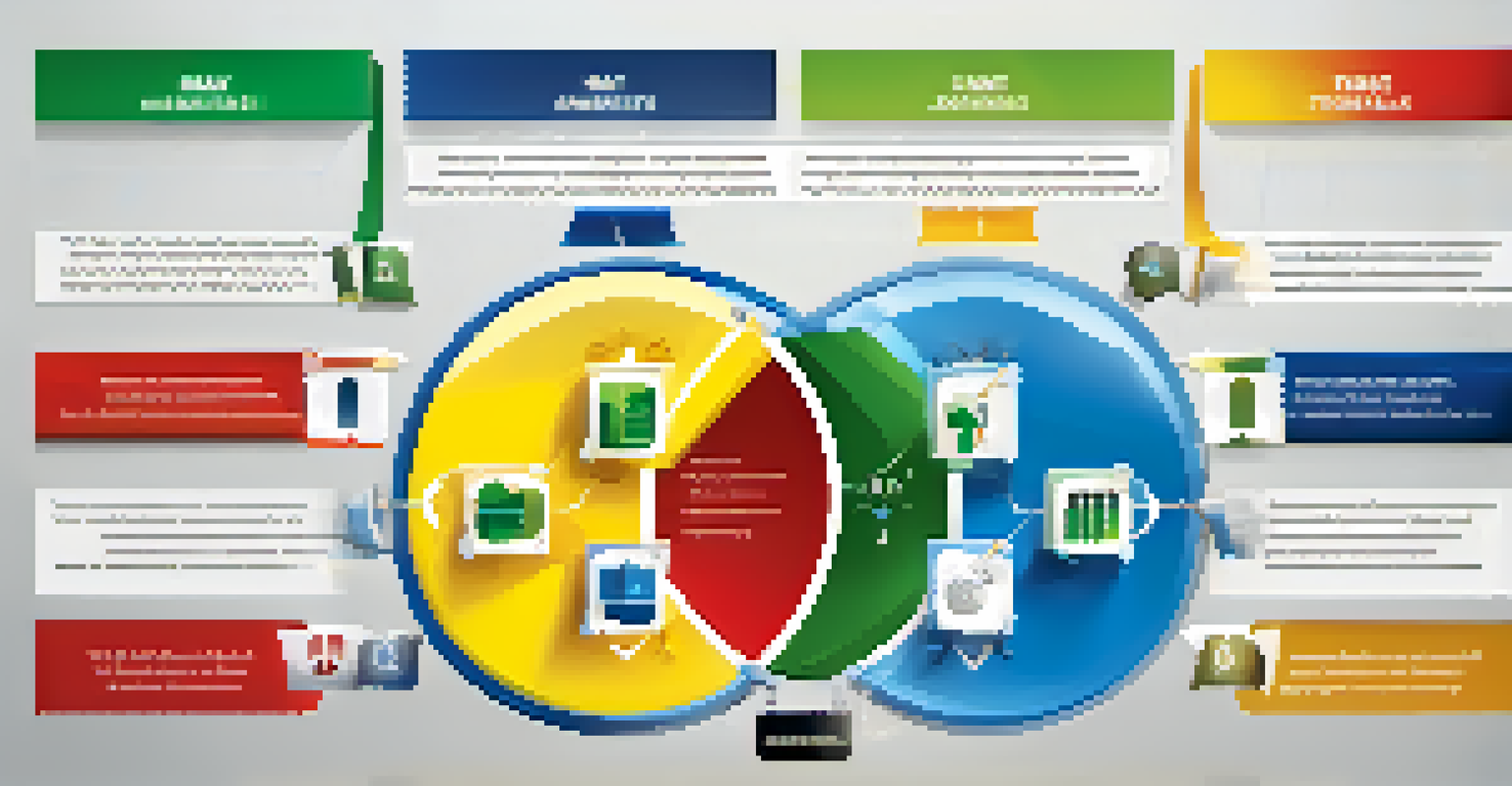SWOT Analysis: Evaluating Competitors' Strengths and Weaknesses

Understanding SWOT Analysis in Competitive Evaluation
SWOT analysis is a structured planning method used to evaluate the strengths, weaknesses, opportunities, and threats of a business or project. It provides a clear framework for assessing competitors in your market. By identifying these aspects, you can better position your brand against others.
In the middle of difficulty lies opportunity.
When you think about strengths, consider what your competitors do well—this could be their brand recognition or customer loyalty. Weaknesses, on the other hand, might include gaps in their product offerings or poor customer service. Understanding these elements helps you strategize effectively.
Ultimately, SWOT analysis serves as a roadmap, guiding you through the competitive landscape. It’s not just about knowing where others stand; it’s about leveraging this knowledge to carve out your niche in the market.
Identifying Competitors' Strengths in the Market
To evaluate your competitors' strengths, start by analyzing their products and services. Are their offerings superior in quality or innovation? For instance, a competitor might have a unique feature that sets them apart, capturing the attention of potential customers.

Another area to explore is their customer base. A loyal following can indicate a strong brand presence. Look at their social media engagement or customer reviews to gauge how well they connect with their audience.
SWOT Analysis Guides Competitive Strategy
Conducting a SWOT analysis helps businesses evaluate their position in the market by identifying strengths, weaknesses, opportunities, and threats.
Understanding these strengths not only helps you recognize what works but can also inspire you to enhance your own offerings. Consider how you might improve or adapt your strategy to meet or exceed these benchmark standards.
Spotting Competitors' Weaknesses to Gain Advantage
Identifying weaknesses in your competitors can be a goldmine for your business. These might include areas where they fall short, such as limited product lines or inconsistent customer service. By pinpointing these flaws, you can tailor your marketing strategies to emphasize your strengths.
The only thing we have to fear is fear itself.
For example, if a competitor struggles with timely delivery, you could highlight your efficient logistics in your marketing materials. It’s all about turning their shortcomings into your selling points, effectively positioning your brand as the better alternative.
Moreover, weaknesses can reveal opportunities for collaboration or niche markets that are currently underserved. This insight can help you refine your target audience and make more informed business decisions.
Exploring Opportunities in the Competitive Landscape
Opportunities often arise from gaps in the market that competitors have yet to address. This could be a new trend, an emerging technology, or a demographic shift that presents a chance for growth. By staying aware of these trends, you can adjust your offerings to meet changing consumer needs.
For instance, if you notice a growing demand for sustainable products and your competitors are lagging behind, this could be your moment to shine. Introducing eco-friendly options can attract a new segment of customers who prioritize sustainability.
Identify and Leverage Competitor Weaknesses
Spotting competitors' weaknesses allows your business to capitalize on their shortcomings and position your brand as a superior alternative.
Keeping an eye on opportunities not only helps you stay relevant but also positions your brand as a forward-thinking leader in your industry. Embracing change is crucial in today’s fast-paced market.
Assessing Threats in the Competitive Environment
Every business faces external threats that can impact its performance, and recognizing these threats is vital. This could be increased competition, changing regulations, or shifts in consumer behavior. By understanding these threats, you can develop strategies to mitigate their potential impact.
For example, if a new competitor enters the market with aggressive pricing, it might threaten your market share. In response, you could focus on enhancing customer loyalty through personalized experiences or loyalty programs.
It's essential to remain vigilant and adaptable. Regularly updating your SWOT analysis ensures you're prepared to face challenges head-on and can pivot your strategy as needed.
Using SWOT Analysis for Strategic Planning
Once you've conducted your SWOT analysis, the next step is to integrate these insights into your strategic planning. This means using your findings to shape your marketing strategies, product development, and customer engagement tactics. Tailoring your approach based on this analysis can lead to more effective outcomes.
For example, if your analysis reveals a strength in customer service, you might want to highlight this in your advertising campaigns. Conversely, addressing a weakness can help improve your overall brand perception.
Embrace Opportunities for Growth
Recognizing market opportunities, such as emerging trends, enables businesses to adapt their offerings and attract new customer segments.
Incorporating SWOT analysis into your regular planning processes ensures you remain agile and responsive to market changes. It empowers your team to make informed decisions that align with your business goals.
Implementing and Monitoring Your SWOT Findings
After developing a strategy based on your SWOT analysis, it’s crucial to implement it effectively. This involves setting clear objectives and assigning responsibilities to ensure everyone is on board. Regular check-ins can help track progress and adjust the strategy as necessary.
Monitoring the results of your strategy allows you to evaluate its effectiveness. Are you seeing the desired outcomes? If not, it might be time to revisit your SWOT analysis and make necessary adjustments based on the latest market conditions.

Continuous improvement is key to staying competitive. By regularly assessing your SWOT findings, you can adapt to changes in the competitive landscape and keep your business thriving.
Conclusion: The Value of Regular SWOT Analysis
In conclusion, conducting a SWOT analysis is not a one-time task but an ongoing process that can significantly enhance your competitive strategy. By regularly evaluating your competitors' strengths, weaknesses, opportunities, and threats, you empower your business to adapt and thrive.
This approach encourages a proactive mindset, allowing you to seize opportunities and mitigate risks effectively. As the market evolves, so should your strategies, ensuring you remain relevant and competitive.
Ultimately, SWOT analysis is about gaining a deeper understanding of your business environment. It equips you with the knowledge needed to make informed decisions that can propel your brand forward.